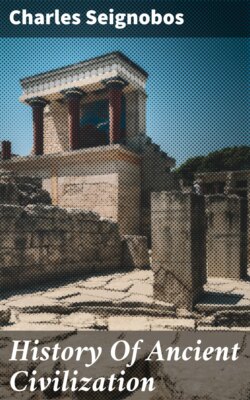Читать книгу History Of Ancient Civilization - Charles Seignobos - Страница 27
На сайте Литреса книга снята с продажи.
CHALDEA
ОглавлениеTable of Contents
The Land.—From the high and snowy mountains of Armenia flow two deep and rapid rivers, the Tigris to the east, the Euphrates to the west. At first in close proximity, they separate as they reach the plain. The Tigris makes a straight course, the Euphrates a great détour towards the sandy deserts; then they unite before emptying into the sea. The country which they embrace is Chaldea. It is an immense plain of extraordinarily fertile soil; rain is rare and the heat is overwhelming. But the streams furnish water and this clayey soil when irrigated by canals becomes the most fertile in the world. Wheat and barley produce 200-fold; in good years the returns are 300-fold. Palms constitute the forests and from these the people make their wine, meal and flour.[15]
The People.—For many centuries, perhaps as long as Egypt, Chaldea has been the abode of civilized peoples. Many races from various lands have met and mingled in these great plains. There were Turanians of the yellow race, similar to the Chinese, who came from the north-east; Cushites, deep brown in color, related to the Egyptians, came from the east; Semites, of the white race, of the same stock as the Arabs, descended from the north.[16] The Chaldean people had its origin in this mixture of races.
The Cities.—Chaldean priests related that their kings had ruled for 150,000 years. While this is a fable, they were right in ascribing great antiquity to the Chaldean empire. The soil of Chaldea is everywhere studded with hills and each of these is a mass of débris, the residue of a ruined city. Many of these have been excavated and many cities brought to view, (Our, Larsam, Bal-ilou), and some inscriptions recovered. De Sarsec, a Frenchman, has discovered the ruins of an entire city, overwhelmed by the invader and its palace destroyed by fire. These ancient peoples are still little known to us; many sites remain to be excavated when it is hoped new inscriptions will be found. Their empire was destroyed about 2,300 B.C.; it may then have been very old.[17]
